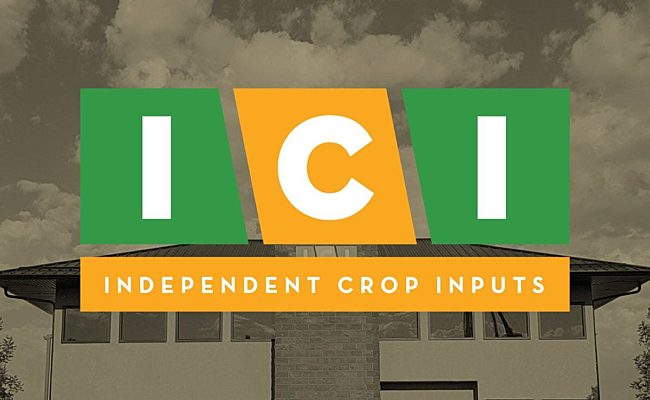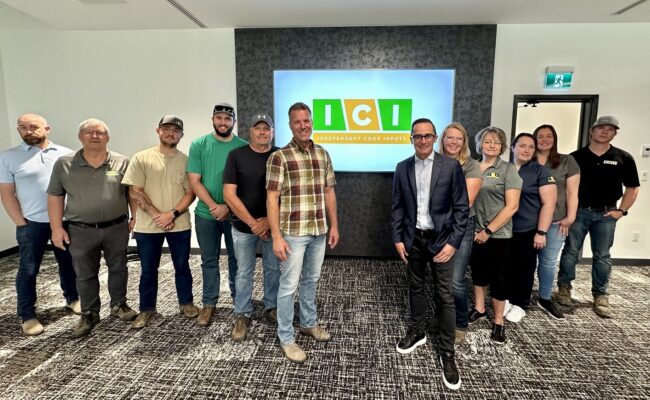
5 Must’s for a Successful 2021 Season
The most important pass over the field each year is the one with your planter/seeder! Harvest gets you the crop in the bin, but that first pass sets you up for success more than anything else.
There are a lot of considerations that must go into this pass too: planning regarding fertilizer, seed variety, herbicides, seed treatment, insecticides, along with rates and combinations! All of this can be put into a plan. However, some considerations are non-negotiable and need very careful management to drive ultimate success this season: high quality and big yields.
Here are the 5 Must Haves during this spring seeding season that Independent Crop Inputs wants to work with you on to maximize your success.
1. Soil Temperature
The driving factor of early season germination and nutrient availability is soil temperature.
Let us start with germination.
For seeds to germinate they need specific soil temperatures at the depth they are seeded. The closer to the surface, the warmer the temperature and therefore the quicker and more consistent the germination. The deeper the seed, the slower the germination. On top of this, the cooler the temperature, the more exposed to diseases like pythium and fusarium. That’s why it can make sense to wait for an extra degree or two before putting the seed in the ground!
Typically, we see more crops with a starting soil temperature for germination at around 5 degrees Celsius.
Here are the ideal soil temperatures for our major crops in southern Alberta:
| Crop | Minimum Temperature | Ideal Temperature |
|---|---|---|
Canola | 3 degrees C | 5 degrees C |
Wheat | 4 degrees C | 5 degrees C |
Barley | 4 degrees C | 5 degrees C |
Peas | 4 degrees C | 5 degrees C |
Lentils | 4 degrees C | 5 degrees C |
Beans | 10 degrees C | 10 degrees C |
Sugar Beets | 5 degrees C | 5 degrees C |
One of the biggest drivers of yield for crops is nutrition! Phosphorous is one of the most important nutrients early, driving root growth and vigour. The difficult part is that cooler soil temperatures decrease phosphorous availability along with micronutrients like zinc!
There are two ways to manage these, as we always have some aspect of control to help manage.
- Placement - Safely putting the right amount of phosphorous with the seed where it makes sense helps manage availability.
- Coating with Micronutrients - Getting micronutrients right beside the seed can drive utilization and vigour.
Getting micronutrients and phosphorus in the crop early can help shave off 1-3 days from a maturity perspective at the end of the season or beat the heat during July!
2. Seeding Depth
Seed depth is one of the most pivotal agronomic considerations to get right each year. Too deep and vigour can decrease and cause poor stand issues; too shallow and germination can drop off, leading to inconsistent plant stands throughout the field. There are nuances to depth based on crop, moisture and even soil texture.
Here are the optimal seed depths for commonly grown crops in southern Alberta:
| Crop | Depth |
|---|---|
Canola | 0.5” - 1” |
Wheat | 0.75” - 1.5” |
Barley | 0.75” - 1.5” |
Peas | 1”-3” |
Lentils | 1” – 2.5” |
Beans | 1” – 2” |
Sugar Beets | 1” |
The simple summary is that the bigger seed, the more energy stored within that seed and therefore the deeper it can be safely seeded!
3. Clean Fields
One of the biggest causes of yield loss year in and year out are weed: through direct competition or early season nutrient and moisture capture. With the increasing fear of resistance to everything from group 1, 2, 4 and 9, a well timed, properly tank mixed pre-burn application is pivotal to optimizing yield in 2021.
We have seen growth of group 9 resistance in southern Alberta and finding glyphosate resistance on your farm could cost you thousands in this year alone. The most effective method for combating resistance is tank mixing.
4. Seed Treatments
Soil and seed borne disease can cause stand reduction, quality issues and ultimately reduce your yield. This can be true for insects too, like pea leaf weevil and wireworm.
There has been a rise in fusarium-based disease over the last number of years in southern Alberta and a well applied seed treatment can be the difference between not only a great yield, but a high-quality pulse or cereal crop.
Our agronomists would be happy to talk to you about seed treatments that are a fit for your specific seed and soils.
But it does not stop there. One of the best ways to optimize yield comes from proactively managing plant health. Plants are just like humans; they have an immune system, known as “systemic acquired response”. Inducing this within plants helps to fight off not only disease, but abiotic stresses too!
What the heck is an abiotic stress?
Drought stress, wind blast, cold stress and salt toxicity all are considered abiotic stresses and are all major considerations early in the season in southern Alberta.
While you cannot eliminate the challenges through them, you can prime your crop to take them head on by utilizing a biological based seed treatment or soil applied product such as ACF-SR from Advanced Ag. This product can stimulate the plant to grow vigorously through stress, continue to drive root growth and be able to tackle other coming stresses like herbicide application for example.
5. Fertilizer Product and Placement
Placement is important. In order to ensure the fertilizer used gets into the plant to drive yield, it needs to be placed appropriately. This means Phosphorus with the seed ideally, whereas Nitrogen might be put into a mid-row or side band or you might even consider talking with your ICI agronomist to discuss an in-season top dress of nitrogen. There are many ways to think about this too, such as liquid versus dry to help manage the top dress scenario of nitrogen or to better position high efficiency liquid phos fertilizer.
We are confident that if you look at these 5 considerations this spring, you will knock it out of the park for the 2021 growing season!
If you are interested in discussing any of these important factors with your ICI agronomist, please contact us directly!
Next up in our News and Blog

ICI’s Fourth Location: A Joint Venture with South West Terminal
ICI and South West Terminal Ltd. to form Joint Venture to operate at SWT’s Whitla, Alberta facility.

Independent Crop Inputs partners with Lethbridge & District Exhibition on naming opportunity in Agri-food Hub & Trade Centre
The Independent Crop Inputs (ICI) Meeting Suite is a premier meeting space in new state-of-the-art venue.